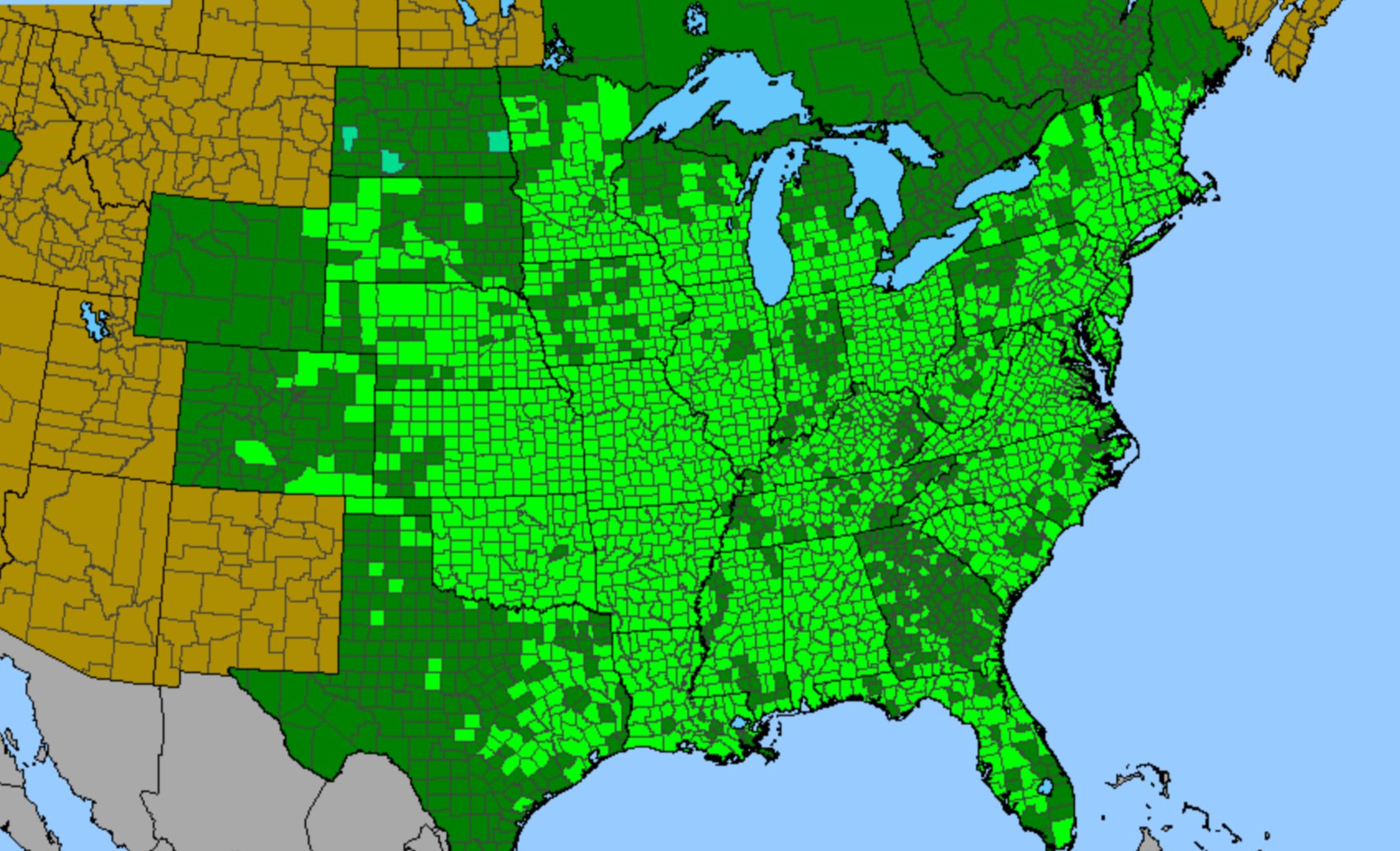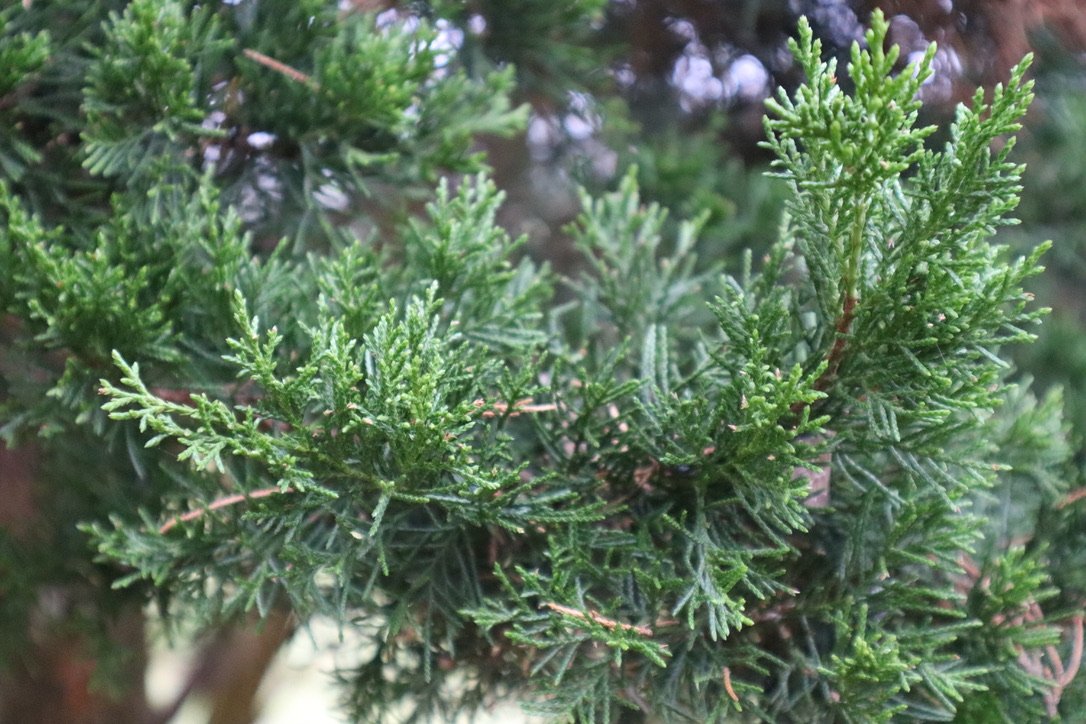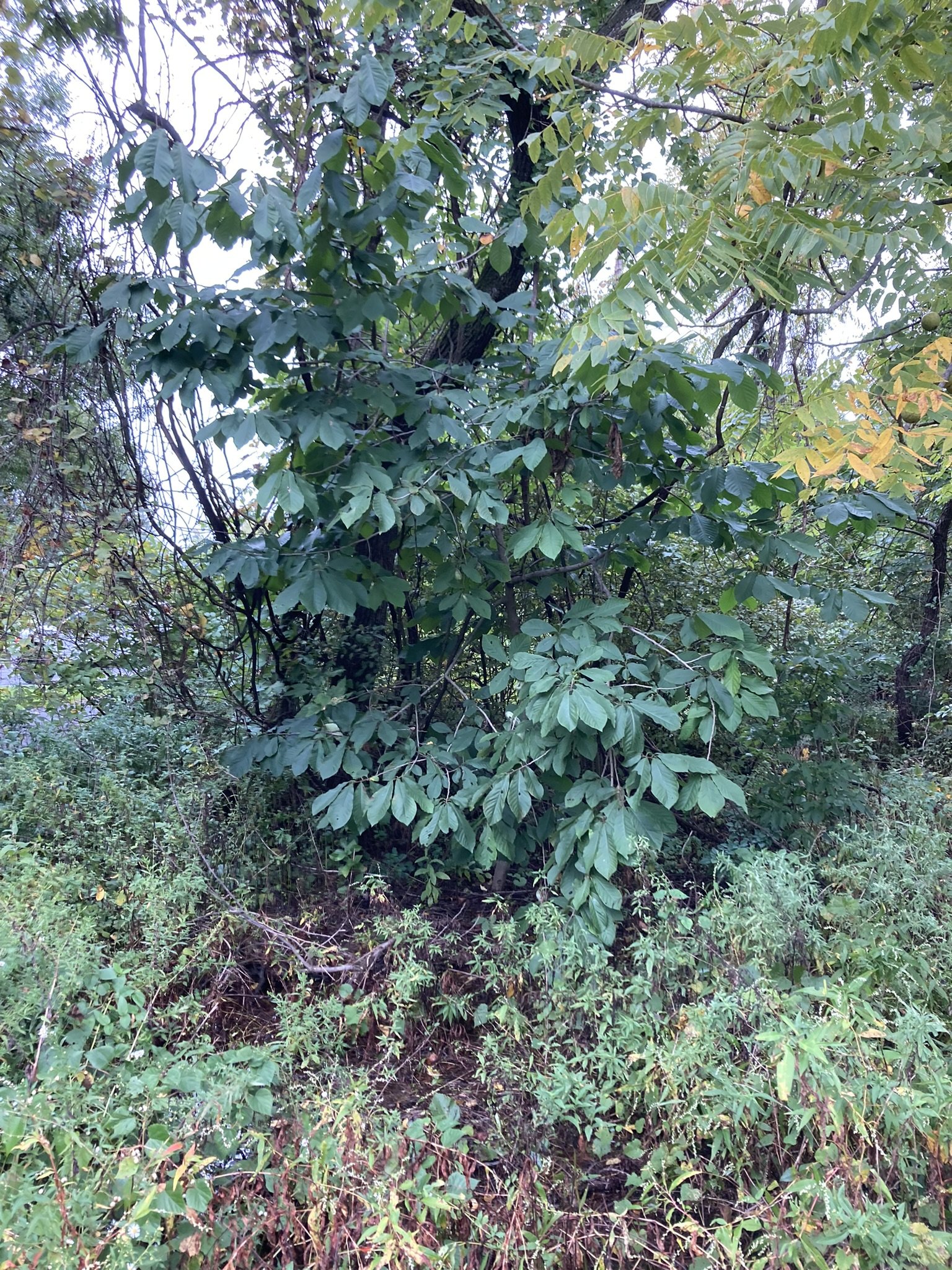 Image 1 of 3
Image 1 of 3

 Image 2 of 3
Image 2 of 3

 Image 3 of 3
Image 3 of 3




Eastern red cedar
🌲 Juniperus virginiana (Eastern Red Cedar)
Evergreen Tree | Eastern North American Native | Wildlife Shelter | Drought-Tolerant & Tough
Highlights for Native Plant Enthusiasts:
🐦 Dense evergreen cover provides year-round shelter and nesting sites for birds and small mammals
🫐 Female trees produce bluish “juniper berries”—a favorite of cedar waxwings, robins, and wild turkeys
🐛 Host plant for the Juniper Hairstreak butterfly and various native moths
🌿 Exceptionally drought-tolerant, wind-resistant, and suited for restoration of poor or degraded soils
🌲 Naturally found in old fields, glades, dry ridges, and prairie edges—great for successional habitat
💨 Acts as a living windbreak and winter cover in open landscapes
Growing Information:
Height: 20–50 ft | Spread: 8–20 ft
Soil: Extremely adaptable—clay, sandy, rocky, alkaline, or disturbed soils
Light: Full sun
Zones: 2–9
Type: Evergreen conifer (not a true cedar)
Sex: Dioecious—plant multiple individuals for berry production
Why Native Growers Love It:
Juniperus virginiana is a tough, fast-establishing native that plays an essential role in early-successional ecosystems. It offers year-round wildlife support, especially during winter when food and shelter are scarce. Birds flock to its dense cover, while mammals and insects find refuge in its branches.
Whether you're stabilizing a hillside, creating a hedgerow, or offering a winter food source, Eastern Red Cedar is a low-maintenance, high-value native evergreen that earns its place in any habitat planting.
Seed-grown from regional sources, never treated with synthetic pesticides. Female and male trees included in mixed plantings. Great for rewilding, hedgerows, and habitat corridors.
🛒 Plant Juniperus virginiana—shelter wildlife, green the winter, and restore resilience.
🌲 Juniperus virginiana (Eastern Red Cedar)
Evergreen Tree | Eastern North American Native | Wildlife Shelter | Drought-Tolerant & Tough
Highlights for Native Plant Enthusiasts:
🐦 Dense evergreen cover provides year-round shelter and nesting sites for birds and small mammals
🫐 Female trees produce bluish “juniper berries”—a favorite of cedar waxwings, robins, and wild turkeys
🐛 Host plant for the Juniper Hairstreak butterfly and various native moths
🌿 Exceptionally drought-tolerant, wind-resistant, and suited for restoration of poor or degraded soils
🌲 Naturally found in old fields, glades, dry ridges, and prairie edges—great for successional habitat
💨 Acts as a living windbreak and winter cover in open landscapes
Growing Information:
Height: 20–50 ft | Spread: 8–20 ft
Soil: Extremely adaptable—clay, sandy, rocky, alkaline, or disturbed soils
Light: Full sun
Zones: 2–9
Type: Evergreen conifer (not a true cedar)
Sex: Dioecious—plant multiple individuals for berry production
Why Native Growers Love It:
Juniperus virginiana is a tough, fast-establishing native that plays an essential role in early-successional ecosystems. It offers year-round wildlife support, especially during winter when food and shelter are scarce. Birds flock to its dense cover, while mammals and insects find refuge in its branches.
Whether you're stabilizing a hillside, creating a hedgerow, or offering a winter food source, Eastern Red Cedar is a low-maintenance, high-value native evergreen that earns its place in any habitat planting.
Seed-grown from regional sources, never treated with synthetic pesticides. Female and male trees included in mixed plantings. Great for rewilding, hedgerows, and habitat corridors.
🛒 Plant Juniperus virginiana—shelter wildlife, green the winter, and restore resilience.































